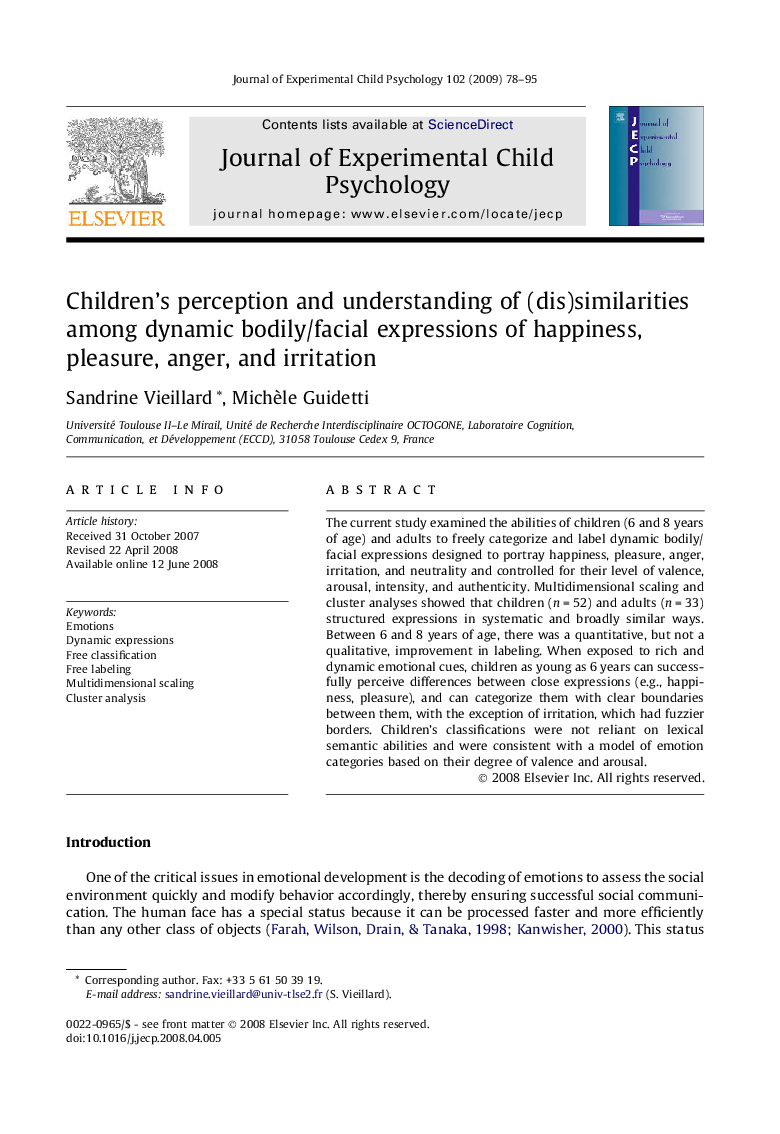| Article ID | Journal | Published Year | Pages | File Type |
|---|---|---|---|---|
| 918721 | Journal of Experimental Child Psychology | 2009 | 18 Pages |
The current study examined the abilities of children (6 and 8 years of age) and adults to freely categorize and label dynamic bodily/facial expressions designed to portray happiness, pleasure, anger, irritation, and neutrality and controlled for their level of valence, arousal, intensity, and authenticity. Multidimensional scaling and cluster analyses showed that children (n = 52) and adults (n = 33) structured expressions in systematic and broadly similar ways. Between 6 and 8 years of age, there was a quantitative, but not a qualitative, improvement in labeling. When exposed to rich and dynamic emotional cues, children as young as 6 years can successfully perceive differences between close expressions (e.g., happiness, pleasure), and can categorize them with clear boundaries between them, with the exception of irritation, which had fuzzier borders. Children’s classifications were not reliant on lexical semantic abilities and were consistent with a model of emotion categories based on their degree of valence and arousal.
